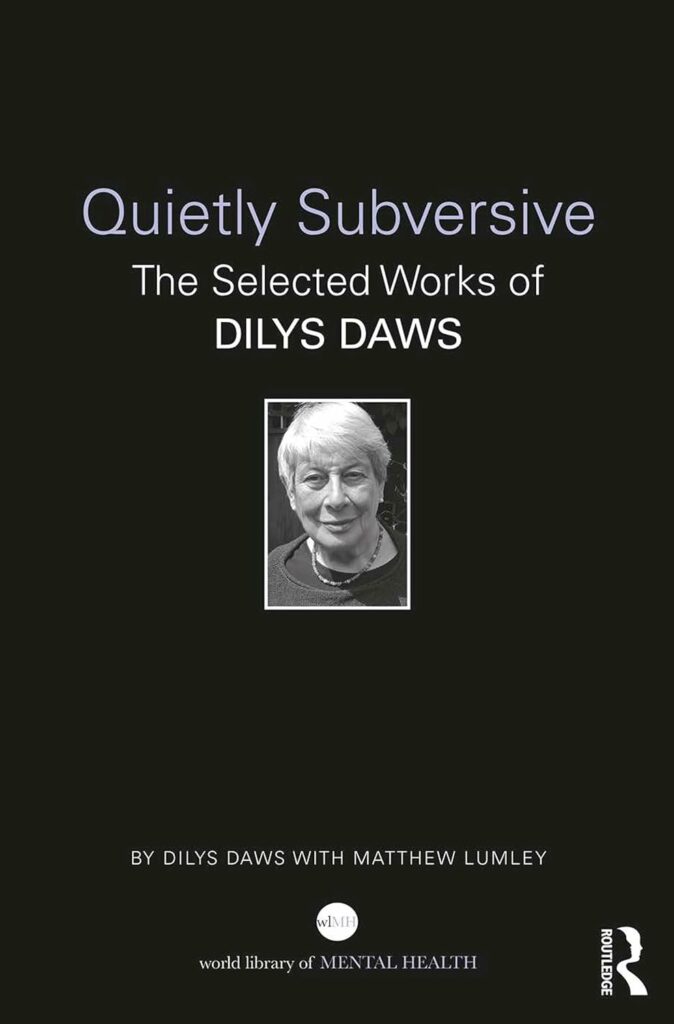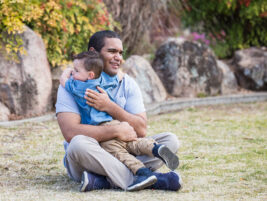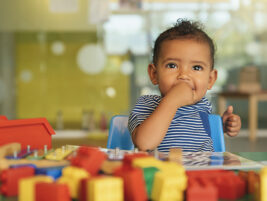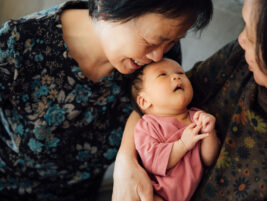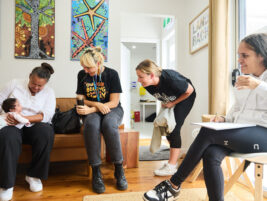Reviewed by Maree A Foley (Switzerland)
Quietly Subversive. The Selected Works of Dilys Daws is a recently released book, written by Dilys Daws with Mathew Lumley. The book reflects 50 years of Dilys Daws’ pioneering, creative, psychoanalytic-informed, real-world work as a child psychotherapist and therapeutic consultant. Mathew Lumley was the primary editor of the book and was instrumental in helping Daws choose which papers to include. As a result of this collaboration, the book includes a vast array of selected papers and book chapters, written by Daws, for child psychotherapists and health practitioners, with selected papers written for parents.
The book focuses on Daws’s work as a child psychotherapist across three primary focal practice contexts: A baby clinic in a GP practice in London, United Kingdom (UK), The Child Guidance Training Centre (CGTC) and its Day Unit, and the Tavistock and Portman NHS Foundation Trust.
In the United Kingdom, baby clinics are universally available to all families with children aged 0 to 5 years. The health practitioners are typically specially trained nurses and general practitioner doctors (GPs). The UK has a universal health coverage system called the National Health Service (NHS). It was established in 1948. The Tavistock Clinic, originally a privately funded clinic, in London, set up in the 1920s, became part of the NHS in 1948. Reflecting several mergers as a result of national public policy directions, the Tavistock Clinic, merged with the Portman Clinic and the Child Guidance Training Centre (CGTC), and is currently called The Tavistock and Portman NHS Foundation Trust.
Quietly Subversive
Daws describes her lens on the title “quietly subversive’. “Subversive means positively turning things over, uprooting…” (Daws, 2023, p. xiv). Every chapter in the book highlights elements of the rubric of Daws living quietly subversive in her practice. A core mechanism that informs Daws’s turning things over, of uprooting, is her intentional application of psychoanalytic principles into current-day practices, across settings and contexts. Daws states at the close of her memoir chapter,
Much of my work has been in disseminating psychoanalytic ideas and in supporting front-line works in other professions, in both writing and teaching around the country and abroad, and in political lobbying. Being ‘quietly subversive’ is about doing just that, helping to change ideas in a way that is manageable and makes people feel better about themselves. (p. xvi)
Daws’s account of her ‘quietly subversive’ practice interactions, reflections, and challenges, is reminiscent of Selma Fraiberg’s work across generations. Fraiberg described the emerging new psychoanalytic and relational knowledge about infants, early development, and their relationships with those who cared for them as “a treasure that should be returned to babies and their families as a gift from science” (Fraiberg, 1980, p. 3). “Quietly Subversive”, is a gift. It shows how Daws in practice, across settings and decades, brought science back to babies.
The structure of the book
The book is structured into five thematic parts. Parts One and Two, focus on Daws’ parent-infant mental health work as a consultant psychotherapist in the baby clinic of a GP practice, in Kentish Town, London. Part Three focuses on Daws’ work with young children in a Day Unit, attached to the Child Guidance Training Centre, which later merged with Tavistock Clinic.
Psychoanalytically informed practice with parents and their infants is a golden thread that runs through these chapters. This lens includes paying attention to dynamics within institutional and multi-disciplinary professional relationships that may be influencing practice decisions, and in turn, the quality of outcomes for infants with their parents.
Part Four is oriented towards works written for parents. Especially new parents with infants. Finally, Part five includes five brief reflections on dimensions of practice, that she has presented over the decades at the World Congresses of the World Association for Infant Mental Health (WAIMH).
Being present
Daws refers to her early work with parents and infants as a process of working out “where to put oneself” (Daws, 1985) to best be able to linger, listen, observe, wait, and at best, offer well-timed reflections. She is present in the moment. Stern (2004) states that,
… the longer the therapist can stay with the present moment and explore it, the more different paths, to pursue, will open up. I suggest that there is great clinical value in a more lingering interest in the present moment. (p. 139)
Similarly, as a writer, Daws has mastered the art of knowing where to stand so there is a lingering, reflective space, a transitional space, within which the reader can see the baby, the child, the family, the psychotherapist, and themselves. Daws arrives in each chapter, just as one imagines her arriving to meet a family, fully present. Her rich child and family descriptions and her unfiltered thoughts and conversations as a therapist in relationship with these children and their parents, invite the reader to be present, to reflect, and to wonder, ‘what would I have thought, done, or said?’.
Therapeutic Consultancy: A Child Psychotherapist in a GP Practice
Part One invites the reader into the therapeutic consultancy practice with Daws, where, since 1976, she has been a child psychotherapist consultant to the health professionals in the baby clinic within a primary health care setting of a General Practitioner (GP) practice. This is a unique setting for child psychotherapists and Daws shows the benefits to infants, their families, and the staff, of her therapeutic consultancy role, in such a setting. Of note, this setting offers a longer window of reach, with families with infants and young children. That is, the clinic is open, and universally free to parents to make use of while their children are preschoolers. There is no, closing of a file, after a brief intervention.
From the outset, as a consultant, Daws balances both connection and enough reflective distance with the infants and parents she meets. This is evidenced by her non-judgemental stance anchored in an understanding that anyone who has, or who finds themselves caring for an infant, can “be thrown off balance by the experience …” (p. 3). Moreover, anyone includes herself. She shares, in the memoir section of the book, that following the birth of her second child, “I had some problems and went back to my analyst…. I wondered, who would I have gone to if I had not been in the therapeutic world?” (p. xiv).
Chapter one captures her seminal paper “Standing next to the weighing scales” (Daws, 1985). Daws describes herself, as finding her way in the baby clinic, to the weigh scales, to be the optimal place to stand, where she could best meet parents, alongside their health professionals. She says, “Bringing the baby to be weighed is the focus of the baby clinic. Parents can visit with no other ostensible reason than to weigh the baby” (p. 5).
Daws continues,
It takes as much skill to stand next to the weighing machine as it does not to talk during a psychotherapy session … (p. 15)
The skill of thinking on behalf of the patient is only evident if one says one’s thoughts in words, but if one talks too much, reflective thought has no time to grow. Standing doing nothing equally requires skill if it is not to be puzzling and persecuting to the people around it. (p. 15)
Across the three chapters in part one, Daws observes, that in this period of parenting, even under good enough circumstances, “parents who have just had a baby are normally in a heightened state of emotion: life and death are part of the ordinary state of a baby clinic” (p. 17). Amidst the common themes of sleeping, feeding, weaning, separation and anxiety issues, parents seek out advice, can often use advice, and at other times, the advice falls short, and the problems don’t pass or subside. At these times, Daws observes opportunities to wonder about relational issues that may or may not be top of mind for the parents. However, given a reflective listening and thinking space, “… often we then find relationship issues between the parents and the baby, such as separation problems, perhaps based on earlier bereavement and losses” (p. 16).
This brings into direct focus the golden thread throughout every chapter, a psychoanalytic approach to everyday conversations with parents about their babies, within a primary healthcare setting. Central to this approach is intentional reflective listening as an essential element of problem-solving that occurs before advice, is offered. It ensures that any proposed action is tailored to this baby, in this family, at this time.
Daws reminds us of the practice of intentional listening as a primary step in any intervention and as a primary element in the experience of the evolving working alliance between the therapist and the family. She said,
When families are really listened to, even in brief work, it may enable them to feel that something crucial about them has been understood. They may be better able to understand and respond to each other and thus deal with their children’s problems. (p. 16).
However, Daws does not shy away from the practice reality that, listening, really listening, is not always easy. It is a practice discipline that requires much self-reflection, supervision, and humility on the part of the therapist. It is both science and craft. Daws captures this when she says, “… if I am too self-contained, it must seem that my observations are for some unexplained private use; if I am too efficiently outgoing, mothers held me their baby books to check them into the clinic” (p. 15).
Daws reflects that the practice setting, the need for brief focused work in community health settings, “can make one pull out the essence of analytic technique” (p. 29). Daws further describes this as,
… ‘psychoanalytic thinking’ to describe a stance from which to promote action. Psychoanalysis is indeed about reflection and self-reflection, what Bollas and Sundelson call ‘psychoanalytic quiet’, but this does not imply non-action. (p. 29)
Moreover, this psychoanalytic reflective space, in a primary health care setting, is not only offered to parents but also on offer to the staff.
Helping the team learn to identify the feelings aroused by patients, to manage these feelings, and indeed to use them as a valuable source of information about feelings the patient might have been unable to tolerate. (p. 17)
Daws outlines the paradoxical therapeutic stance of being a consultant (an organizational outsider) to colleagues within the GP practice, who she describes as insider colleagues. Daws says that in a consultant role with other health professionals working alongside babies,
A therapist can help colleagues to think before acting and be brave in taking on emotions, psychosomatic links, and transferences. Such consultation is not teaching about interventions but standing uncertainty and emotional distress without jumping to active strategies. (p. 29-30)
Daws also reflects on her role as a consultant and suggests that staff in a health setting with infants, such as the baby clinics, may similarly benefit from a “flexibility to put themselves from time to time outside their institution in order to question how useful it really is to patients who come to it” (p. 10).
Daws further illuminates the multifaceted relationship between professional colleagues and parents. She is not talking about a uni-directional relationship where the therapist holds all the gold, the interpretations, while the parent, or the colleague in a consultation, are passive recipients. Instead, Daws states, that the relationship is at best a shared learning experience. It is not a top-down process. Daws repeats throughout the book, that her job is to create a listening space within which the baby and their parents can be seen, heard, and understood. Similarly, in a professional colleague consultation, the colleague can be seen and heard so they can see and hear the baby in their family more clearly. All this is active listening as a primer to action that is guided; not by a generic principle or a list of dos and don’ts, but by relationship-specific action.
Parent-infant psychotherapy
In Part Two of the book, Daws includes specific chapters on common issues that present with parents and infants. Daws argues for the importance of thinking about parent-infant rather than mother-infant work. For example, Daws addresses the use of brief psychotherapy for sleep problems. This paper represents a chapter from her previously published book, Parent-Infant Psychotherapy for Sleep Problems: Through the Night (2nd ed.) (Daws & Sutton, 2020). She also provides two chapters on feeding problems.
A common theme across these chapters is the exploration of intergenerational connections and relationships in the parents’ stories and experiences that may have become reactivated in these early months and years of parenting. Daws’s work reflects that of Selma Fraiberg (1959), who addresses the presenting issue as a window into a developmental issue and looks for meaning and connection in the infant and their primary relationships that might make sense of how come this issue is pervasive, at this time, in the relational and developmental process.
Part Two continues the conversation whereby Daws invites the reader to think about where parent-infant psychotherapy belongs as a practice in the wider world psychoanalytic practice, that has its roots in working retrospectively with metaphors and storied memories of adults, as individuals. In contrast, Daws states, “I realised that in work with families we deal with the realities before they are translated into metaphors” (p. 33). Daws continues to say that, in contrast to adult psychoanalysis, the child psychotherapist can be both an observer and recipient of transference communications. She further observes,
Parent-infant work is notable for its activity. Enactments are everywhere. Even the way in which families come into the room and settle themselves down, or as they leave … the timing of sessions must allow for this process as a legitimate part of the work, not as an inconvenient side-effect. (p. 35)
Daws describes what is typically brief, that is four to six psychoanalytically informed therapy sessions with parents and their infant. She describes these encounters, in a way which relocates the therapist offering interpretations to a reclined client in a couch-free associating, to being in a more peer-like relationship with parents. She says, “I look together with parents at their baby …”, the parents and the baby are active participants in contributing to the thinking space. Daws also reminds the reader that while she is very familiar with the broad stroke issues that parents bring to the sessions such as feeding, sleeping difficulties, or difficulties in feeling close and connected with their baby, she asserts that the therapy experience with each family is unique, “it cannot be done in a routine way – the impact of each family’s stress and bewilderment must be received afresh each time” (p. 34).
As above, the discipline of listening is central to this work, where Daws states that “our major aim in this work is to consider not just what the patients think but how they think about it” (p. 36).
Serious listening to the problem as told by the parents enables the therapist to think about what is told, how it is told, and what is missing. People who are properly listened to, and who are appreciated for who they are and what they have to face, may then be able to take on ideas about themselves that start first in the therapists mind. They may then start thinking for themselves, and perhaps creating some of what was missing. (p. 43)
Daws credits Selma Fraiberg, for highlighting the importance of listening to parents’ cries as a pathway to help parents hear their infants’ cries. Similarly, “Ghosts in the Nursery” (Fraiberg et al., 1975) highlights the crucial therapeutic stance of listening to parents’ needs, their unmet needs, as a clearing ground to support the parents to now meet their infant’s needs, just as their needs ideally would have been met.
However, while this can sometimes be a joyous experience of attunement, it can also be painful, difficult, and sadly, not in time for the baby. Daws acknowledges this devasting reality, where she states, that sometimes it is no longer serving the baby to persist whereby “care for the baby elsewhere may be unavoidable” (p. 87).
Child psychotherapy with school-aged children
In Part Three, the therapeutic setting changes from the baby clinic to the Day Unit attached to the Child Guidance Training Centre, and later the Tavistock Clinic. Daws explores the therapeutic frame in which the therapy relationship unfolds via two primary therapeutic elements.
Of note, child psychotherapists typically do not see families, several times a week, as in the classic adult model of psychoanalysis, or the early days of child psychoanalysis. Instead, child psychotherapists, apply psychoanalytic principles to everyday practice with families that may include once-a-week sessions, brief psychotherapy, and consultations with the network of professionals, engaged with families with infants across a range of health and social organizations.
First, Daws examines the issue of consent in child psychotherapy. She does so from the perspectives of the parent/s, the child, and the therapist. She highlights that, at times, there are conflicting interests and permissions at the outset and during a therapeutic intervention. Second, Daws explores the relationship between expressions of resistance and cooperation in a unique therapeutic setting where the child psychotherapy occurred, on-site, in the place where the child attended school, in a Day Unit.
Moreover, this special Day Unit, run by the NHS, was a day space for school-aged children who for various reasons were not able to attend and thrive in a regular school setting. The setting was educational within a therapeutic environment that may or may not include psychotherapy. She provides rich psychoanalytic informed descriptions of the interactions between child psychotherapy matters, institutional dynamics, and multi-disciplinary professional relationships. Daws does not lose sight of the child, their healing journey, nor the systemic efforts to create and maintain a therapeutic environment across all areas of the Day Unit. While the setting is unique, the principles of multiple professional relationships involved in one family are relevant across settings.
Writing for parents
The fourth part of the book includes a series of four papers, Daws wrote, for parents, especially new parents with very young children. While the target audience is different from the previous chapter, these writings are not separate from her communication with professionals about babies and families. They reflect Daw’s unifying lens that psychoanalytic thinking, concepts, ideas, and their inclusion in supporting mental well-being, have their place with whoever is Winnicott’s “someone”, in the life of a baby.
In the introduction, Matthew Lumley, shares with the readers, why these excerpts were chosen. He states that the selected papers,
… draw out the way in with Dilys’s approach to writing ‘baby books’ has striven to help parents engage with the most difficult and sometimes disturbing emotional aspects of infant life and parenting that are so often glossed over but they are so importantly addressed by psychoanalysis. (p. xix)
Two of the papers included were co-written with Alexandra de Rementeria in their book, Finding your way with your baby. Crying babies (Daws & de Rementeria, 2015) and Your baby’s emerging sense of self (Daws & de Rementeria, 2015), conversationally integrate psychoanalytic thinking. However, Daws and de Rementeria do not shy away from inviting parents to consider their relationships, past and present, to better understand what each baby might be communicating with them as parents, and what they might be unintentionally communicating to their babies.
Brief reflections by Daws
The final section of the book includes a series of brief reflections that have been presented at WAIMH Congresses and in the UK Association for Child Psychotherapists Bulletin. The themes of these reflections, reflect less commonly written-about experiences that are frequently encountered by parent-infant psychotherapists and practitioners. For example, burnout, personal growth benefits of being a child psychotherapist, saying something in a session which disrupts the therapeutic alliance and how we repair this in the relationship, and a reflection on rivalry with fathers.
In her paper, “Enlivened or burnt out”, a paper presented at the WAIMH congress in Paris in 2006, Daws reflects on the challenges … “in most psychodynamic kinds of work it is taken for granted that our own experience is stirred up by the work … Oddly, however, this has not totally permeated wider early-years professions” (p. 176). She refers to the gifts of the work to the therapists which can also be therapeutic where the repair experience for families, “may be as therapeutic for us as for the patients” (p. 177). She concludes the chapter highlighting the unexpected benefit to the therapist who can bear to listen, be fully present, and speak from a place of listening, that there seems to be potential for “an emotionally integrative effect for the therapist who goes through such a process with parents and their infants that is deeply satisfying” (p. 178).
It is interesting to note that, at the same WAIMH Congress that Daws presented this paper, Daniel Stern gave the Serge Lebovici lecture, captured in his paper, “The clinical relevance of infancy: a progress report” (Stern, 2008). Stern talked about this in terms of a paradigm shift, moving from a focus on intrapsychic processes to one that also includes and emphasises interpersonal and intersubjective processes.
Included in this section, Chapter 16, concerns a paper, “Working at the edge: the quiet subversiveness of psychoanalytic thinking”, a paper that Daws resented at the WAIMH Congress in Cape Town (2012). This chapter illustrates the osmosis of psychoanalytic thinking and presence across the multiple spheres of Daws’s life. From the weigh scales to her personal “kitchen table” (Fraiberg, 1980) as a mother and a grandmother. Also, in politics and public health policy, promoting infant-mental health as a universal service within the NHS while the public health service in 2012 was (and continues) being squeezed and cut as a result of national-level policy.
Concluding comments
I arrived at this review, following 25-plus years as a child psychotherapist, practicing in both the public and private sectors in New Zealand. Much of these years focused on infants and very young children in their families and care contexts. From the outset, Quietly Subversive, was akin to a magic carpet. I was transported, with “emotionally integrative effect” (p. 178), via the examples and clinical vignettes, across time, and continents to the clinic playrooms, kitchen tables, lounge room floors, hospital cubicles, and clinic waiting rooms where I had journeyed alongside infants, young children, and their families.
The book provides a springboard for professionals individually, or in group settings to reflect and consider practices in their multidisciplinary settings and organizations. The book will be of relevance for readers across practice contexts within which parent-infant therapeutic work and child psychotherapy with school-aged children, are the focus. This book has the potential to become a meeting place for multidisciplinary colleagues to gather, listen, reflect, and debate. It may also become a metaphorical weigh station for clinicians to return to and gather around as they reflect on portions of the book together.
Daws has made an incredible contribution, across decades, to bringing psychoanalysis into the uncluttered space of everyday conversations, with parents and infants, health professional colleagues, and policymakers. In sum, Quietly Subversive, is simply sublime.
References
Daws, D. (1985). Two papers on work in a baby clinic: (i) Standing next to the weighing scales. Journal of Child Psychotherapy, 11:2, 77-85, DOI: 10.1080/00754178508254776
Daws, D., & de Rementeria, A. (2015). Crying babies. In D. Daws & A. de Rementeria, Finding Your Way with Your Baby: The Emotional Life of Parents and Babies (2nd ed.). Routledge. https://doi.org/10.4324/9781003081623
Daws, D., & de Rementeria, A. (2015) Your baby’s emerging sense of self. In D. Daws & A. de Rementeria, Finding Your Way with Your Baby: The Emotional Life of Parents and Babies (2nd ed.). Routledge. https://doi.org/10.4324/9781003081623
Daws, D., & Sutton, S. (2020). Parent-Infant Psychotherapy for Sleep Problems: Through the Night (2nd ed.). London: Routledge. https://doi.org/10.4324/9780429198212
Daws, D., with Lumley, M. (2023). Quietly Subversive. The Selected Works of Dilys Daws. Routledge, Taylor & Francis Group, New York and London.
Fraiberg, S., Adelson, E., & Shapiro, V. (1975). Ghosts in the nursery: A psycho-analytic approach to impaired infant-mother relationships. Journal of the American Academy of Child Psychiatry. 14, 3, 387–422. doi:10.1016/S0002-7138(09)61442-4. PMID 1141566.
Fraiberg, S. (1980). Clinical Studies in Infant Mental Health: The First Year of Life. New York: Basic Books, Inc.
Fraiberg, S. H. (1959). The magic years: Understanding and handling the problems of early childhood. Charles Scribners’ Sons.
Stern, D. (2004). The Present Moment in Psychotherapy and Everyday Life. New York: Norton.
Stern, D. (2008). The clinical relevance of infancy: A progress report. Infant Mental Health Journal, 29, 3, 177-188.
Authors
Maree A Foley (Switzerland)


